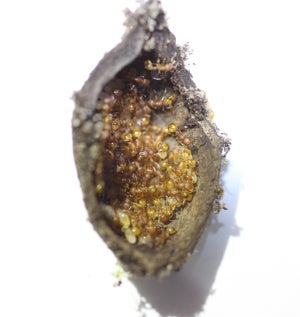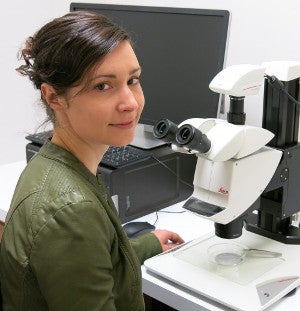LENS Engineering, Science, and Technology
An Ant's Life
Tracking Tiny Creatures as They Evolve in Warmer Environments
 PHOTO: Ryan Martin
PHOTO: Ryan MartinAs the globe warms, telltale signs of change lurk all around us—even inside acorns where colonies of ants reside and have become study subjects for a Case Western Reserve biologist.
Sarah Diamond, PhD, an assistant professor, wants to better understand how ants—considered an indicator species because of their sensitivity to environmental conditions—respond to both urbanization and climate change. She and her colleagues have found that acorn ants in cities, which often are warmer than nearby undeveloped areas, have evolved during the last 100 years to better withstand higher temperatures. “This is really exciting,” said Diamond, who also studies the impacts of climate change and urbanization on butterflies. “People tend to think about evolution occurring over long periods, on the order of millions of years.”
Diamond said that how ants respond to warmer temperatures is important because they provide key ecosystem services, such as seed dispersal, soil aeration and the decomposition of organic matter. A failure to cope with change could result in diminished services.

Sarah Diamond, assistant professor
In a study published online in February in the Biological Journal of the Linnean Society, Diamond and colleagues from Case Western Reserve reported that acorn ants in “urban heat islands” made warmer by human activity have undergone evolutionary changes and are better able to tolerate heat than their rural relatives. But not all ants can thrive in warmer environments.
In a different study published last fall in the journal Science Advances, Diamond and her colleagues from several universities reported that warmer temperatures in forest communities altered ant behavior. Heat-loving ants moved into key nesting sites and remained there for extended periods of time, displacing heat-intolerant ant species and destabilizing communities accustomed to ants that frequently come and go and turn over occupancy of sites. This alteration, too, could have ripple effects across entire ecosystems.
“The climate is changing too fast for many of these species” and some can’t keep up, Diamond said. The result could be the development of very different ant communities in the future, with shifts in the types and quality of ecosystem services that these communities provide, she said.





